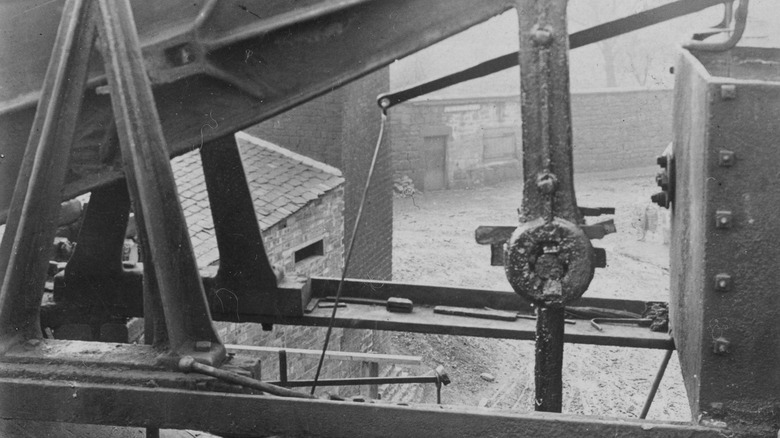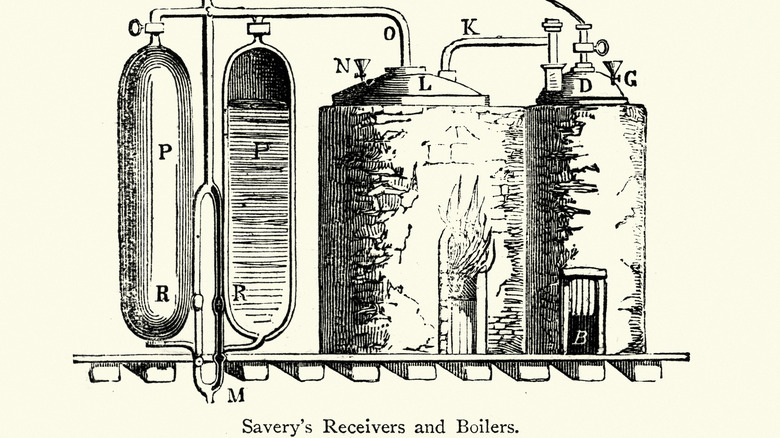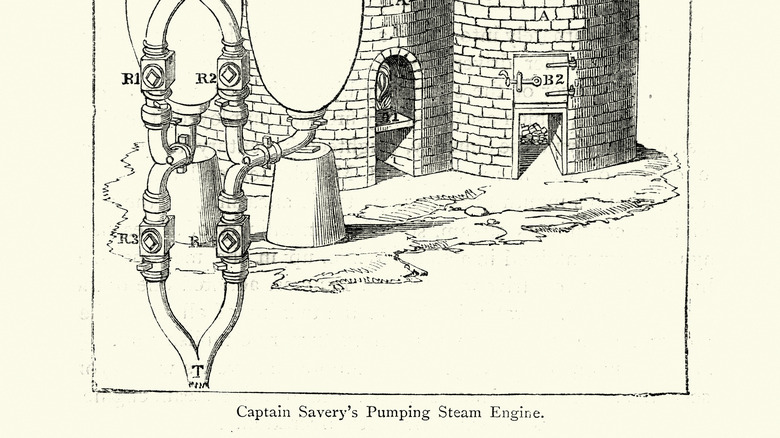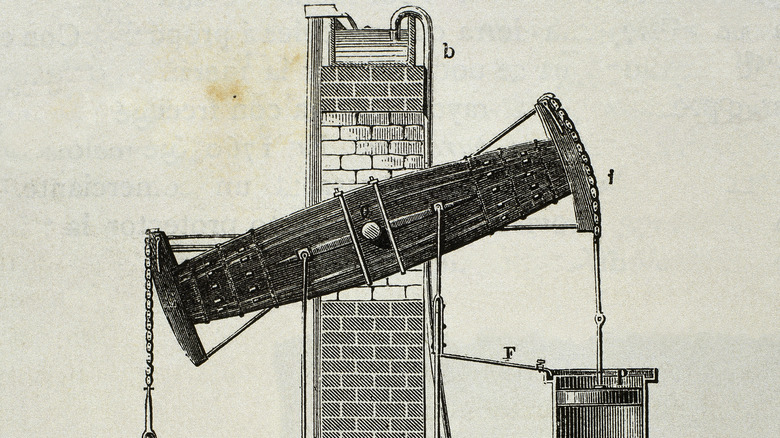Here's How The World's First Steam Engines Worked
Technology tends to have a way of becoming smaller as it evolves. The ever-convenient microchip and lithium-ion battery serve in tandem as the brains of so many devices today, and their sleek and lightweight nature is often reflected in the overall package. By contrast, the steam engines that preceded the internal combustion engines and electric trains of today were anything but small and subtle.
The Electronic Numerical Integrator and Computer, known to its friends as ENIAC, was the very first computer (as we kind of know them today). It was a behemoth of a machine, housed in an area of 1,800 square feet and weighing a ludicrous 30 tons. One of the first steam engines — dubbed the Newcomen engine after its creator Thomas Newcomen — was also formidable at 9.5 meters long and tall.
This majestic machine was developed for the relatively simple purpose of pumping water, but in a time before electricity, such machines had to utilize rather complex principles and components to function. This is an introduction to the first steam engines and the inspired designs and concepts that allowed them to work. Some of the most sophisticated engines today owe a debt of gratitude to them.
The first steam engines
Who created the steam engine? As with so many inventions, the question is more complex than it seems. So many brilliant minds had a hand in such work over the centuries, designing their own machines and refining what came before. Eventually, what constitutes the very first steam engine as we know them today becomes rather blurred.
Technically, steam engines have existed since the 1st century in the form of Hero of Alexandria's aeolipile. More a steam-powered toy than a steam engine, the device was a cauldron of water with a sphere held above it by two vertical lengths of pipe. By means of the pipes, steam from the cauldron and its flames reached the sphere suspended above, where it left through two small outlets. As it did, the sphere revolved on its axis.
This was one very early, very small-scale example of the power of steam, something of an elaborate ancient Greek desk toy. The next step would be thinking bigger and devising a way to harness that power for industrial use. This took quite some time: It was in 1698 that inventor Thomas Savery filed a patent for what may have been the first steam engine designed to be put to work. The machine's primary job was to render coal mines workable again by siphoning away groundwater from flooding, a common issue that kept owners from their all-important profits.
The mechanics of Thomas Savery's breakthrough steam engine
The Savery steam engine was not a gigantic cauldron-and-ball contraption, a la Hero. It was a more complex design, though the concept behind it was rather similar. Savery himself wrote a manuscript —"The Miner's Friend; Or, An Engine To Raise Water By Fire Described; And Of The Manner Of Fixing It In Mines" — in which he outlined the function of his so-called Miner's Friend. The principle of the engine, he wrote, was "raising water by the impellent force of fire," and that's exactly what it did.
Savery's machine had a valve, a water "tank" of sorts, and another area to direct the steam from the device's water valve downward. The engine's water boiled, and the cooled water was applied to the resultant steam. This process caused a vacuum effect through which the groundwater was extracted. It was a brilliant concept, particularly considering the materials available at the time. It didn't work perfectly, as water was able to escape through less-than-watertight joins of metals such as copper and it was costly to run, but the idea was there to develop further.
This was precisely what Thomas Newcomen — who had lent his smithing talents to Savery's own work in this area — did. And his more sophisticated and efficient machine would help demonstrate the viability of such a machine in mining.
Thomas Newcomen's atmospheric engine, and further advancements
The vacuum that serves as the strength of such a pump results from the fact that water expands by around 1500 times when evaporating. The key, then, is to direct all the atmospheric pressure where it's needed — on condensation. Newcomen's engine operated on the same principle, but the vacuum was produced by a beam that moved similarly to a metronome. One end was attached to the valve and the other to the boiler, and the motion allowed for constant supplies of steam and cooled water (to ensure condensation) within the machine to be pumped to the mine.
Such engines weren't simply for tackling groundwater in mines. Indeed, Savery's also found utility in providing sources of water for larger and more supply-hungry homes. There was much more to come for steam engines, though. In 1769, military engineer Nicolas-Joseph Cugnot created a steam-powered tractor. These vehicles didn't need to constantly evaporate and condense water, but they did still rely on a supply of water and a hefty boiler, not to mention frequent pauses to generate more steam.
These early inventions, naturally, wouldn't wow us in today's technologically advanced age. Cugnot's first vehicle couldn't exceed around 2.5 mph, after all. Steam power is something of a rarity all around today, mostly seen just in certain classic locomotives. Even so, they were crucial steps forward for humanity's ingenuity — and should be celebrated as such.



